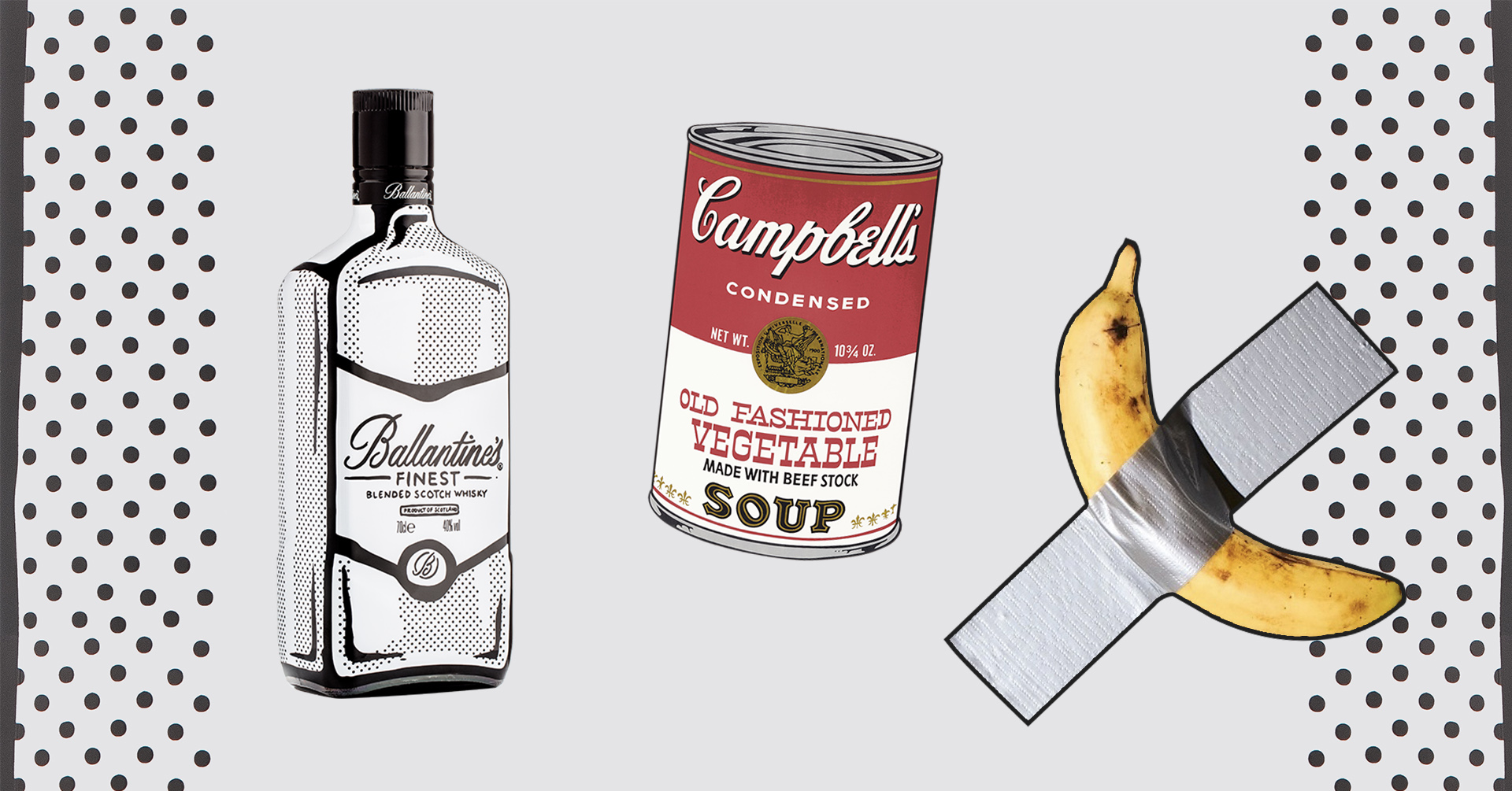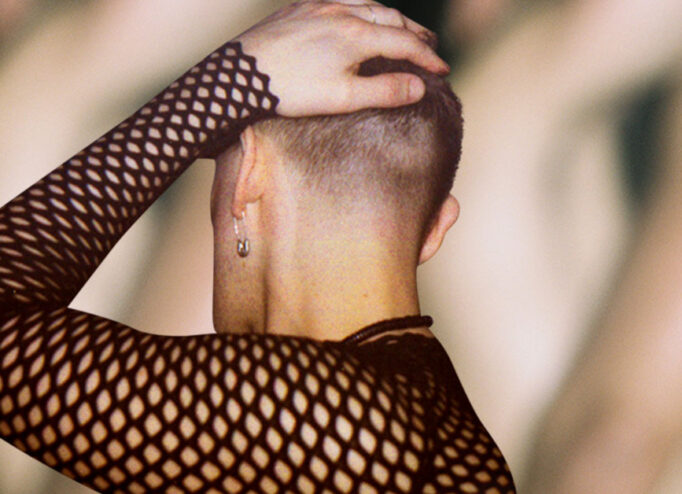For a century artists have been working with everyday objects and posing questions with them, shocking and provoking the public. So toilets, bananas, cans of soup, or life jackets become the focus of attention in the art world, and viewers become participants in a kind of game, figuring out why this is art.
For the release of Ballantine’s collaboration with the artist Joshua Vides, where the art objects were a bottle and a briefcase, art expert of the 19th and 21st centuries Katya Taylor specially for DTF Magazine examines key moments in modern history, when familiar things were transformed into iconic
6 iconic items


The same Duchamp

It all undoubtedly began with Marcel Duchamp’s «Fountain». The urinal was a revolution in art for several reasons. It was after its creation that Duchamp came up with the readymade («ready-made object») trend, which was followed throughout the twentieth century. There was no point in recreating reality any more, photography was doing a brilliant job. But Duchamp went further.
Being an ally of the Dadaism movement, which celebrated the triumph of absurdity and nonsense, he bought a urinal at a plumbing store and placed it on a pedestal as if it were an antique sculpture. In doing so, Duchamp showed that anything can become art.
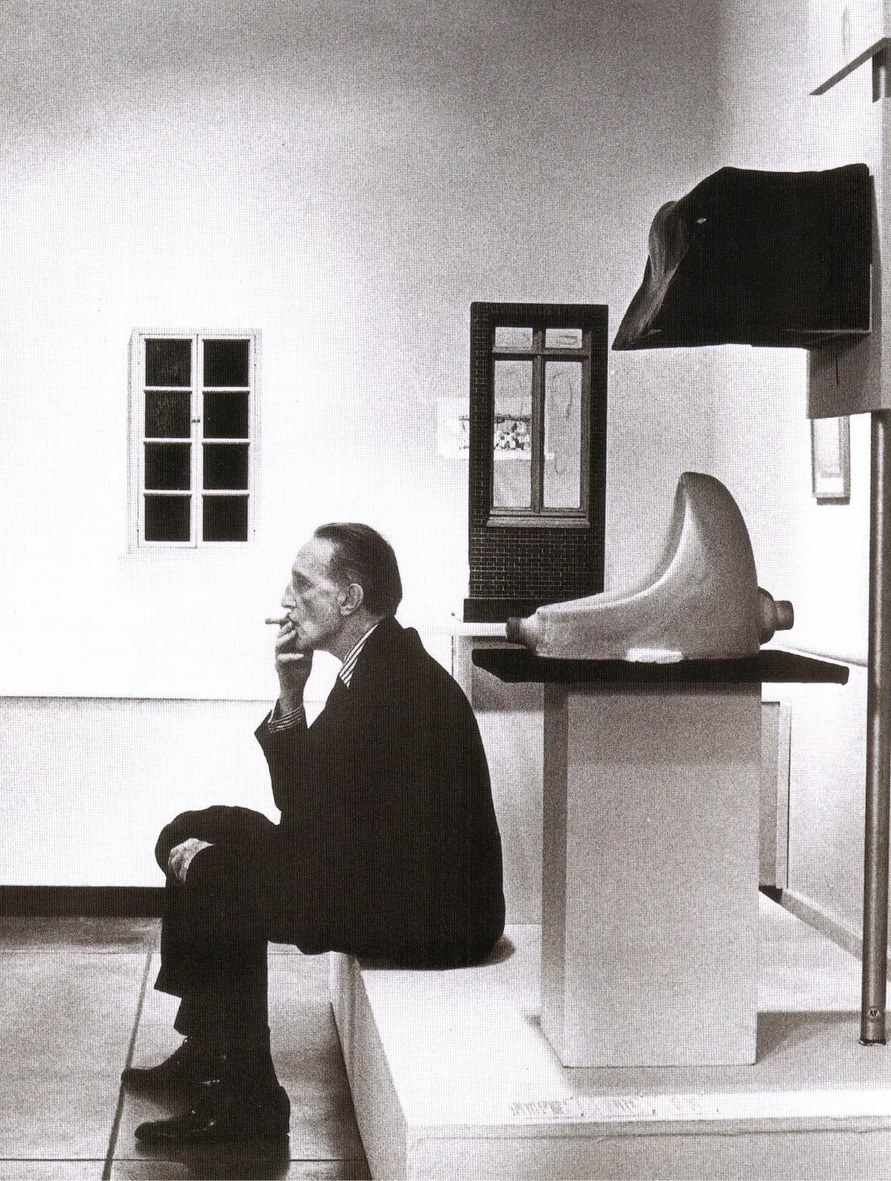
Thus the following question was posed for the first time: where does a work of art begin and end? Probably the stretcher for a painting could also be a great bedside table, but no one doubts that if a canvas is stretched on this wooden thing, it is worth something. Then why can’t a urinal be a piece of art? After all, the artist also came up with the idea and touched the work, albeit only once, when that urinal was turned. In short, Marcel Duchamp asked more questions than he gave answers, and this has spurred more than one generation of artists to become his followers, ranging from Andy Warhol to Ai Weiwei.
In addition, there was an aura of mystery around the urinal, and this also drew attention to it, like the «Mona Lisa» after her abduction by Alfredo Geri in 1913.
The original «Fountain» was never shown, then it was lost. Only copies remained in museums, but even these caused a stir and became the object of provocations. Occasionally there were big auction sales of the urinal, which Duchamp had probably never even seen. But what difference does it make if the idea, not the thing, matters in readymade, as the founder of the trend believed.
Duchamp is still considered a provocateur, but Maurizio Cattelan seems to have surpassed his teacher.
Banana duct-taped to a wall
Basic facts: «Comedian» is a banana affixed to a white wall with gray duct tape at the Perrotin Gallery at the 2019 Art Basel fair in Miami Beach.

One hundred years after Duchamp and his urinal, Maurizio Cattelan taped a banana to the wall. As is always the case with readymade, besides the object, the legend of it is also important. According to one version, Cattelan took the banana with him all year long and glued it wherever he could, thinking either about an installation or a sculpture of a banana. But nothing came to the artist’s mind, and then he realized that a banana was just a banana. And he showed it «in the buff».

@cattelanbanana
The installation is called «Comedian», and it’s clear from the title that Cattelan is making fun of all of us. After all, he only affixed a banana to the wall, and the work went viral thanks to people and the media. It was us who were surprised by the banana, it was us who disagreed with it as a work of art even after all that occurred in the twenty-first century. It was the media and social media that made this work a rock star.
Also important is the fact that the founder of the Parisian store Colette, Sarah Andelman, bought «Comedian» for 120,000 euros on the first day. The banana immediately had its own Instagram account @cattelanbanana. Soon after, the artwork was eaten by artist David Datuna, calling such an act of vandalism a performance art, which added to the excitement and sparked a wave of discussion. At one point, the banana was simply removed from the booth because it was impossible to control the excited crowd standing in line to see this modern masterpiece.

Cattelan, like Duchamp in his time (and no doubt bowing to him), poses the question of what counts as a work of art. Is the banana an object or the act and gesture of the artist? The banana comes with a certificate of authenticity and instructions. It is the certificate that is proof of purchase, it can be sold as property or even pledged to the bank for a loan. And a banana is still just a banana.
Andy Warhol’s soup can
Basic facts: «Campbell’s Soup Cans» (1962) are 32 paintings by Andy Warhol depicting soup in cans (32 flavors).

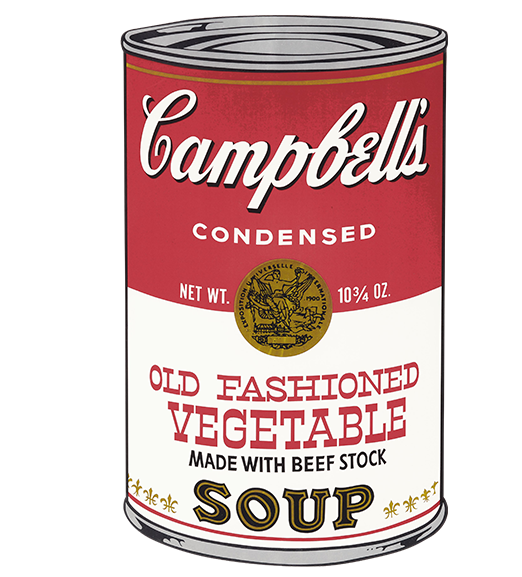
Andy Warhol was a successful illustrator, but it was «Campbell’s Soup Cans» that launched his artistic career. When the series was first presented at an exhibition in Los Angeles, it made no impression on the public. But art critics were outraged at the choice of such an inferior subject matter to create a piece of art. On what grounds did Warhol dare to equate a trip to the store with a visit to a gallery?
In order to annoy the critics, the exhibition sold not only paintings, but also Campbell’s soups, which Warhol had autographed. They sold for ten times the price of the same soup in the store around the corner. But that’s not all that happened.
The fact is that in the early sixties, abstract expressionism was considered the mainstream of art in the United States, which called for abandoning object painting and copying reality, appealing to emotions and feelings, to the process, not to the result. At the same time, pop culture in the States was going in the exact opposite direction. People’s lives were getting better. More and more inventions were hitting the market. It was at this time that the overconsumption society was being born. And pop art was just a reflection of that culture.
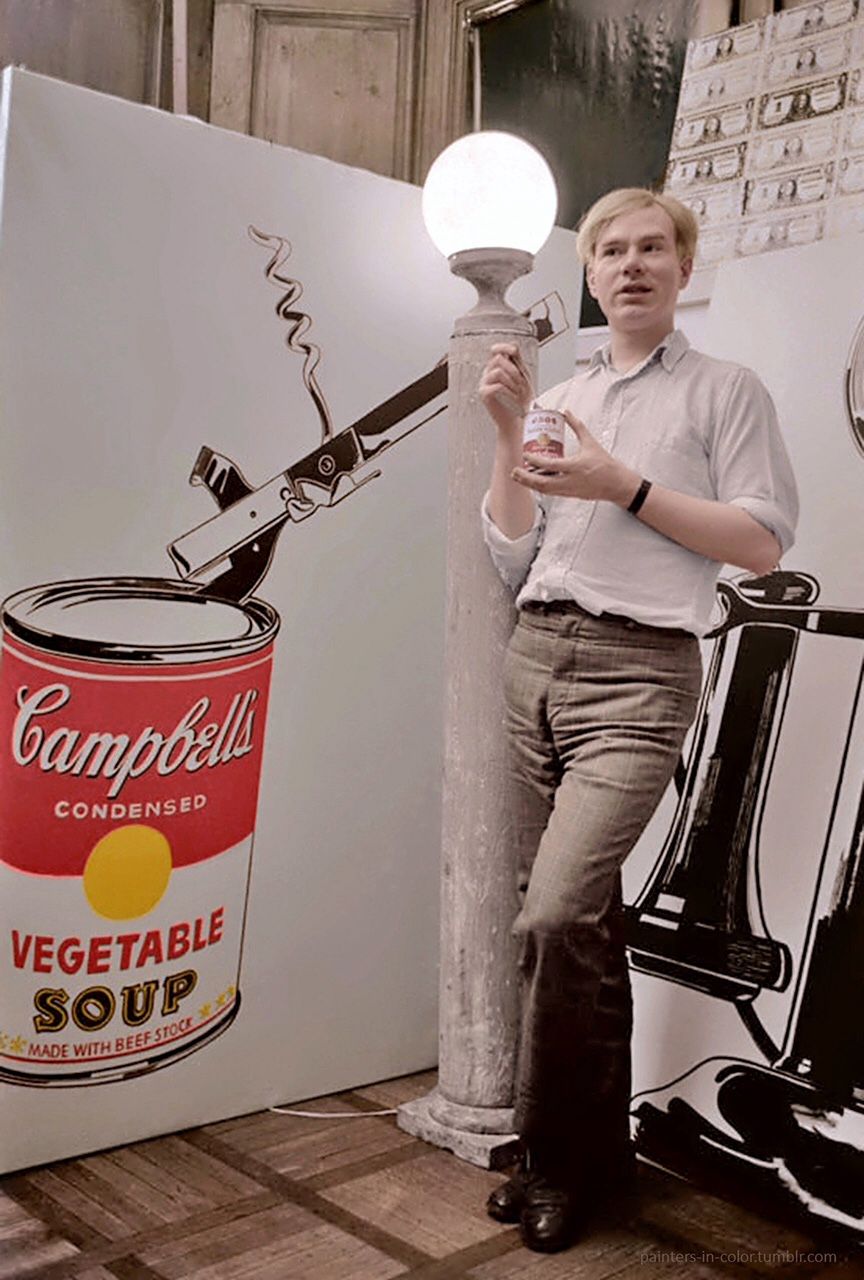
There are many legends about how Warhol got the idea for the soup. It is believed that he was advised to depict something that everyone would understand and reflect everyone’s values. It is also a peculiar form of still life. But it wasn’t just the subject matter that was important, but also the technique.
At all times there have been artists who depicted dead rabbits with grapes and pomegranates, competing in finesse of execution. Given an age in which everything from the kettle to the vacuum cleaner is automated, Warhol also kept his involvement in still life to a minimum. He sketched a can of soup and placed it on a white background, without trying to embellish anything. This is how he demonstrated the achievement of his era, which, in fact, was the soup in the can.
What if we don’t depict or interpret everyday objects? What if they spoke for themselves? This is the essence of the practice of Ai Weiwei.
Ai Weiwei’s Life Jackets
Basic facts: Artist Ai Weiwei presented an installation of 14,000 life jackets in 2016. It adorned the columns of Berlin’s «Konzerthaus» concert hall.

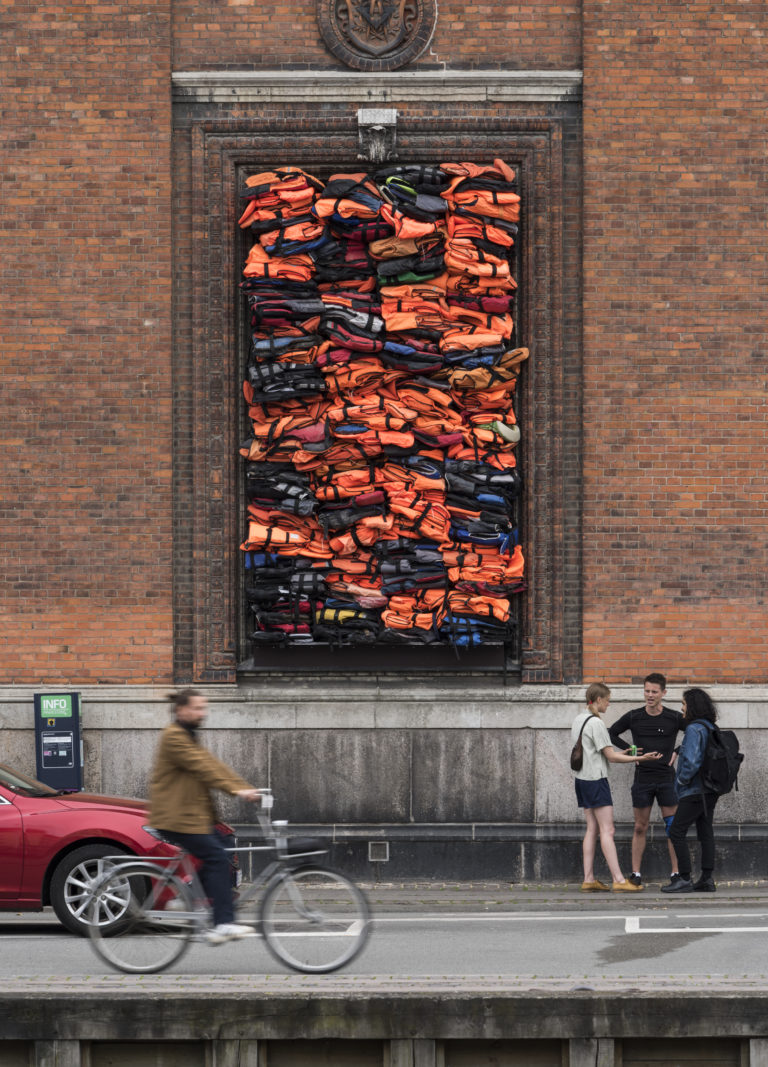
The jackets had been collected from Lesbos, a Greek island, which has become a transit point for migrants from the Middle East fleeing war in their homeland. And Ai Weiwei set up his studio right on the island to better explore the issue of migration.
According to the International Organization for Migration, more than a million refugees arrive in Europe by sea each year. Many countries close their borders to refugees or tighten laws, depriving them of their already precarious rights. Ai Weiwei staged an action in Germany, perhaps the country most favorable to migrants, to draw public attention to the problem.
He did it during the Berlin Film Festival and it attracted the attention of the international press and Hollywood stars. In fact, in addition to the action, Weiwei also directed «Human Flow», a film that shows the pain of the victims through personal stories.

As an artist, Weiwei uses a very simple, almost detective method: he examines the facts, digs into hidden data, plunges into the atmosphere, but often does not transform or interpret the truth, but shows it in all its glory and pain. And he does this through everyday objects. For example, he uses children’s backpacks in his project «Remembering» in memory of the children who died in the earthquake in China.
The 23-year-old artist Meret Oppenheim came to Paris and immediately became a muse of the Surrealists in 1936. She became famous for her fur cup…
Oppenheim’s «Fur Breakfast»
Basic facts: The object is called «Fur Breakfast», it is a cup, saucer and spoon covered with the fur of a Chinese gazelle.

Surrealism was in its heyday in the early thirties, and Meret Oppenheim was at the center of it. She was surrounded by the most talented people of the time, ranging from Man Ray to Andre Breton. One day she was sitting in a French cafe with Picasso, who complimented her fur bracelet. He also added that everything is more beautiful when it’s wrapped in fur. Meret immediately took up the idea and presented «Fur Breakfast» at the next Breton exhibition in 1936.
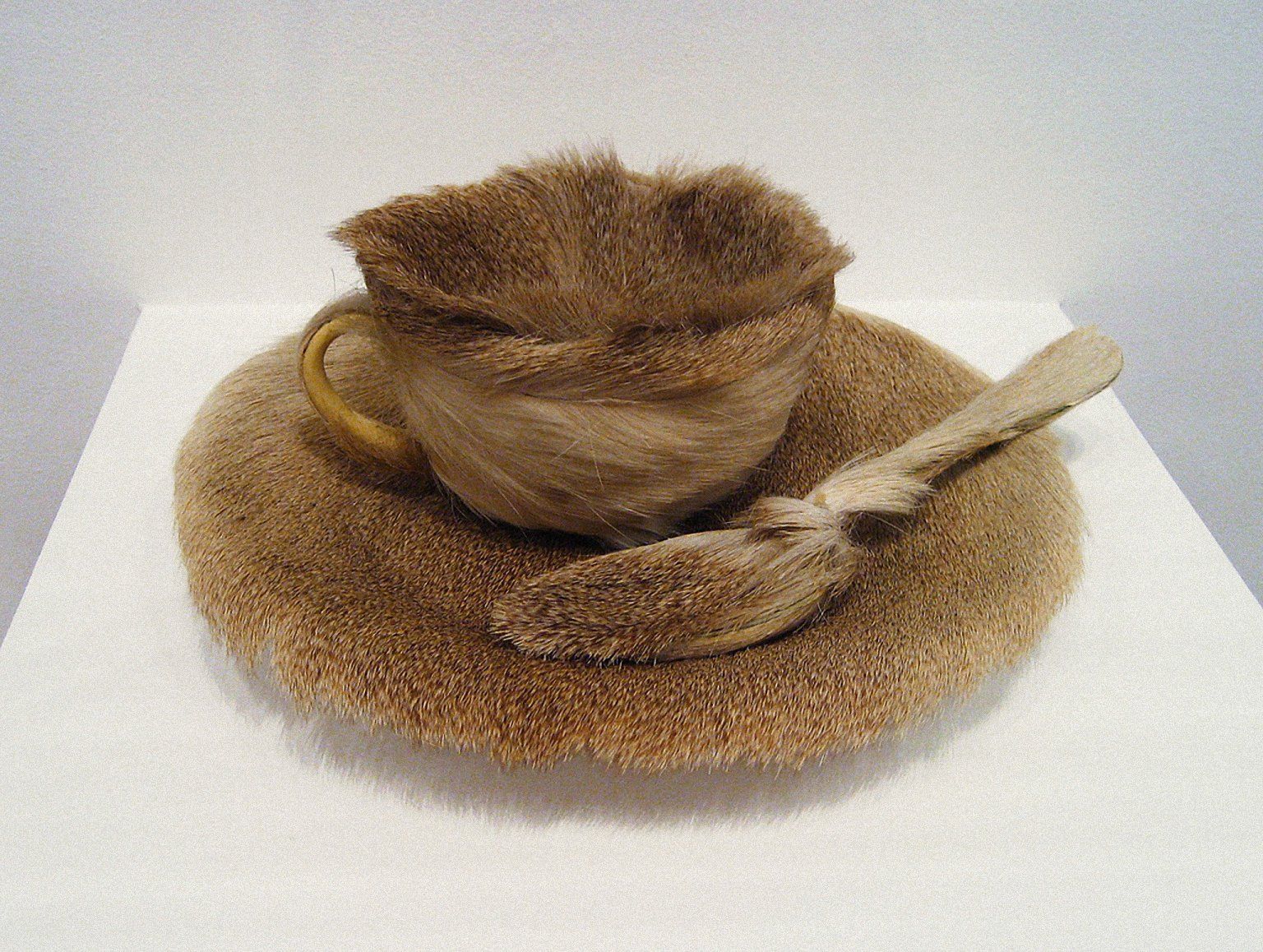
A cup wrapped in fur seems like a very simple idea, but it causes internal contradictions. It is designed for drinking from it, but the thought of feeling fur in the mouth immediately causes disgust. At the same time, you feel a pleasant feeling when you stroke the fur. «What a brilliant ambivalence!» — the critics exclaimed, and desperately loved this object, which contains many connotations, including erotic ones. After all, touching the fur with one’s lips is something very wild, making such a tea ritual almost indecent.
The title of the work was invented by Andre Breton. It refers to Edouard Manet’s «The Luncheon on the Grass», also a scandalous painting in its time. The point is that it depicts a naked woman having breakfast in the company of two clothed men, and this, in turn, gave the viewer a kind of clue to the mystery of the sexual subtext in the work.
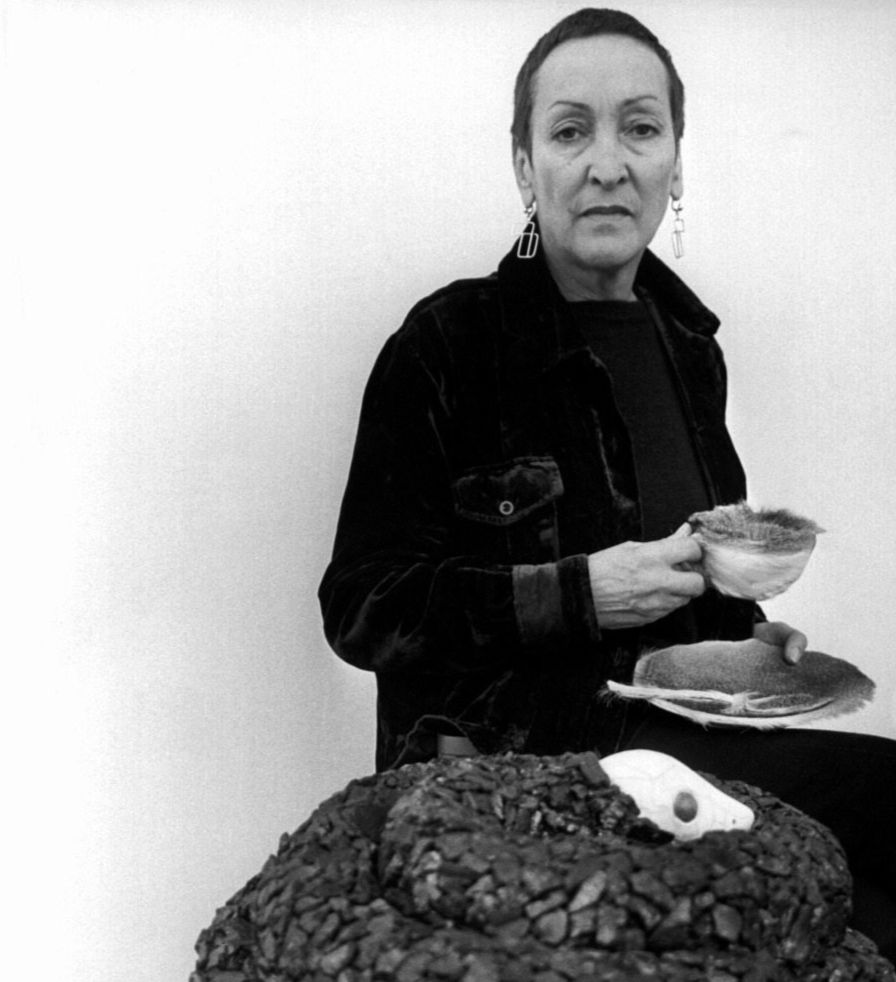
But there are many other references in the Oppenheim cup. For example, the fur of the Chinese gazelle was very expensive, so only the upper class could afford it. Thus, «Fur Breakfast» is also a mockery of the ladies of society, who were ready to buy a Chinese gazelle at all costs and for any money, just to show their status.
Today the Oppenheim cup is considered a classic absurdist composition. It is full of contradictions and is a prime example of Dadaist heredity. Subsequently, Meret created many more strange objects based on contrasts, like a ring framing a sugar cube instead of a diamond, or a tea table on chicken legs.
Throughout the twentieth century, artists used objects from ordinary life to put them on a pedestal of art to show us their role and meaning from a different angle. Marcel Duchamp was followed not only by the Surrealists, but also by representatives of Pop Art, Arte Povera, Performance and Postmodernism. And «art of the object», as readymade is also called, has become a tool for artists to amplify their statements and to draw our attention to things that previously seemed dull and commonplace.
Bottle from Ballantine’s x Joshua Vides Collaboration
Basic facts: Joshua created a limited-edition bottle and briefcase that refers back to the Prohibition period in the U.S. in the 1920s.

One example of how an ordinary thing, a bottle, can become an object of art is shown by Joshua Vides’ collaboration with Ballantine’s. Bottles in general have become a collector’s item, as Ballantine’s well demonstrates. Suffice it to recall the bottles dedicated to world clubs, Felipe Pantone’s limited edition bottle or the collaboration with the Boiler Room. But especially valuable are those releases in which the artist and the brand have a message.
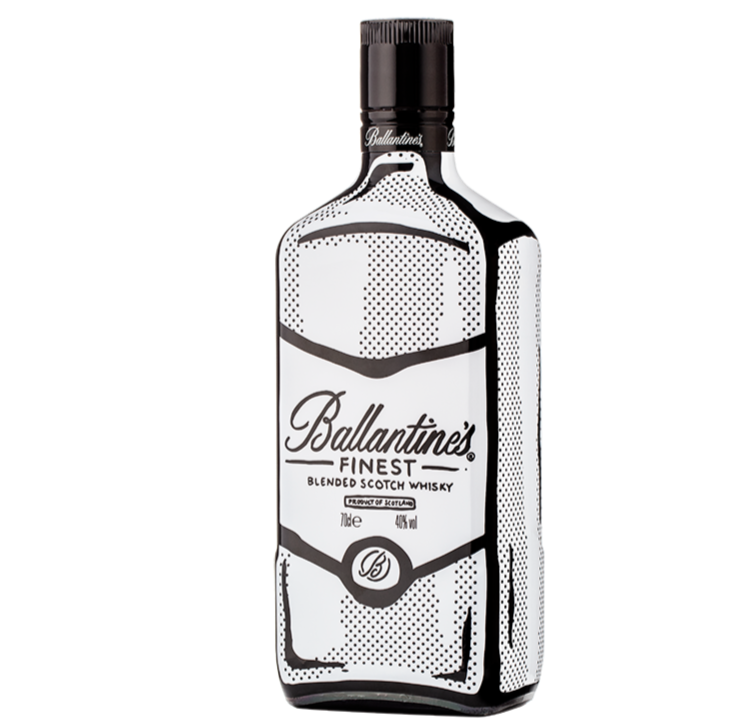

Joshua Vides spent 10 years working on his own streetwear brand before becoming an artist. His new hobby was sketching improvised objects after Vides watched a movie about Nike designer Tinker Hatfield. After learning how to do it on objects around him, Joshua posted sketched Air Force 1 on Instagram in 2018. The photo immediately went viral, and two years later, Vides is called one of the most popular contemporary artists. He has not only dozens of hand-crafted art pieces, but also collaborations with Fendi, Converse and now Ballantine’s. At the same time Joshua does not consider his style something new and believes that many things that literally lie on the surface can be turned into something unique.
Joshua reimagined the brand’s classic bottle in collaboration with Ballantine’s. And then, he created his own interpretation of such a briefcase inspired by the story of how the bottle managed to be hidden in rectangular briefcases during Prohibition because of its shape.
«It reminded me of the DIY method we use in the studio. I didn’t just make an accessory — I made it by my own rules», Vides says of the collaboration.

Read more about Joshua, his work and the Ballantine’s project in our DTF Magazine exclusive interview.
Ballantine’s × Joshua Vides collaboration is already available in Ukraine.
This article was prepared with the support of

